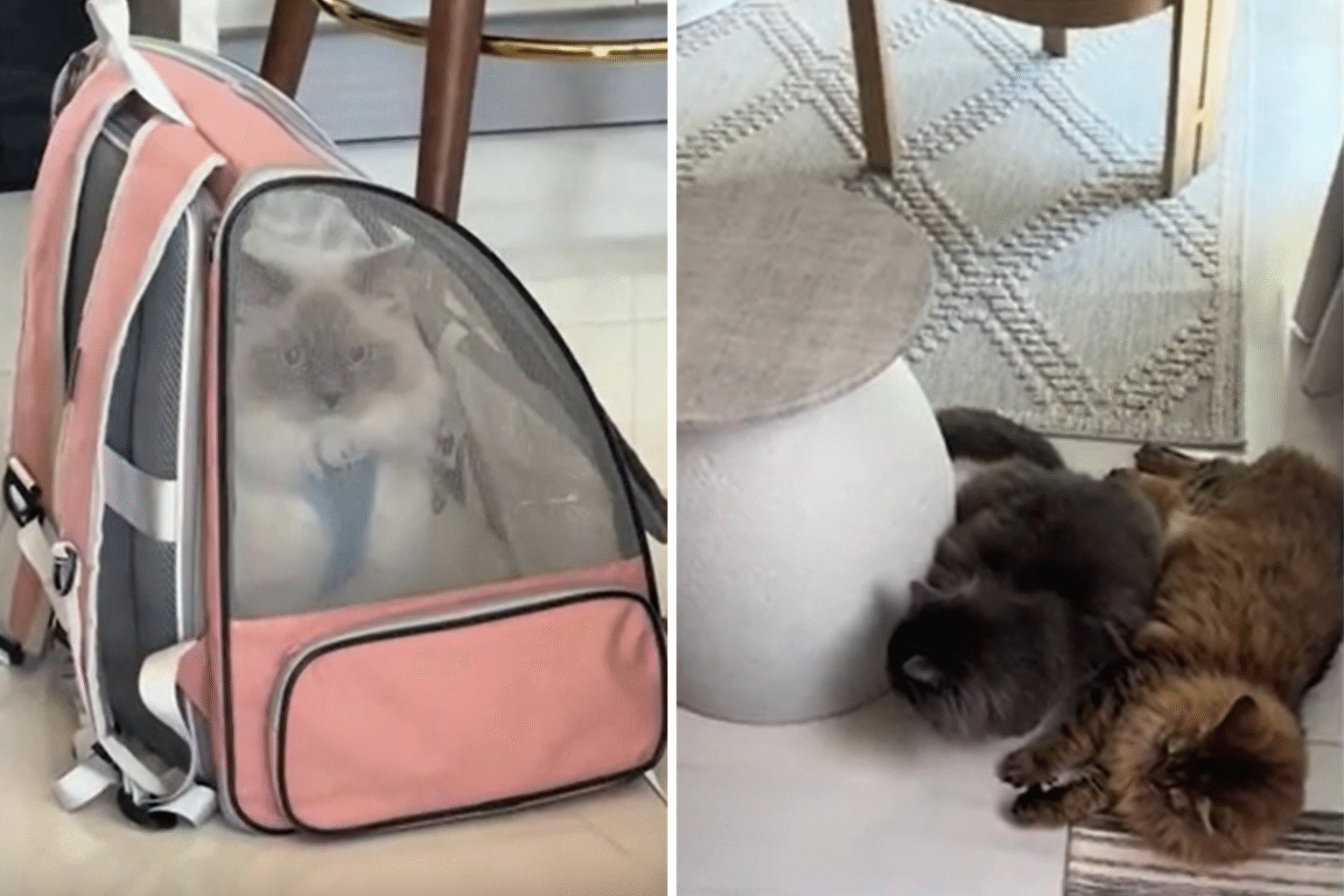A woman’s attempt to pet-sit a friend’s cat has gone viral on TikTok after her own two felines were left cowering in fear of their fluffy houseguest.
On August 13, user Mckenzie (@mckenziefrenziee) shared a clip of the dramatic feline encounter that has since racked up more than 578,000 views. The video opens with her two male cats huddled nervously behind a table, peering wide-eyed at the newcomer. Chanel, a striking white, fluffy cat, hadn’t even been let out of her carrier yet—but her mere presence was enough to spark panic.
Layered text over the video reads: “Chanel is here for the weekend and the boys are terrified.” When the camera pans to Chanel, she is seen staring intently at Mckenzie before fixing her gaze on the cats. With her piercing expression, it is clear who is in charge. The post was captioned, “Her face is sending me,” and viewers couldn’t stop laughing.
One TikTok user commented: “She was like: after I am done with this 2, you’re next.”
Another posted: “She looks so ready to start trouble.”
A few days later, Mckenzie posted a follow-up video showing exactly why her cats were so intimidated. In the clip, Chanel is perched dominantly on top of one of the male cats called Sullivan, asserting herself as the household boss. After a brief standoff, she calmly walks away, leaving him sprawled on the floor, looking utterly defeated.
In the comments, the owner told one user: “The poor guy is TIRED.”
The series of videos has left internet viewers in stitches, with some praising Chanel’s confidence and larger-than-life personality. Others have concluded it must be a rag doll thing.
“When I take my girl rag doll over to my mums she beats up my mums cat too. [They are] such divas,” commented one user.
Feline Aggression Explained
Chanel wasted no time establishing dominance. Territorial aggression often occurs when a new pet enters a household, leading to chasing, swatting, or intimidation tactics. In this case, Chanel didn’t even need to step out of her carrier—her gaze alone sent the resident cats scrambling for safety.
The American Society for the Prevention of Cruelty to Animals (ASPCA) says that aggression in cats is threatening or harmful behavior toward people, other felines, or animals.
It can range from hissing and avoidance to full-on attacks. This behavior usually stems from instinctive drives as explained below:
- Fearful or defensive aggression occurs when a cat feels threatened and cannot escape. The more trapped the feline feels, the stronger the reaction becomes. Their body language often includes crouching, flattened ears, a tucked tail, dilated pupils, hissing, swatting, or biting. In these situations, the best approach is to avoid the cat until it calms down.
- Territorial aggression happens when cats defend their space, which might be the entire home, part of it, or even the surrounding neighborhood. Both male and female felines can be territorial, though males usually claim larger areas. Their behavior may include stalking, chasing, hissing, swatting, or urine spraying. Triggers for territoriality include the arrival of a new feline, sexual maturity, changes in the household, or stray cats encroaching on their area.
- Play aggression is especially common in kittens and cats under 2 years old. Even though the intention is playful, the behavior—such as stalking, pouncing, biting, and scratching—can still cause injury or damage. Felines that were orphaned or weaned early may not have learned to control their play, and long periods without stimulation or encouragement of rough play by owners can make the problem worse.
- Redirected aggression is the most-dangerous form. It occurs when a cat is agitated by something it cannot reach, such as another animal outside a window, and then lashes out at whoever is nearby. Attacks can appear sudden and unprovoked, sometimes even happening hours after the initial trigger. Because these responses are automatic rather than intentional, it is important never to approach or try to break up an agitated cat fight.
Newsweek is waiting for @mckenziefrenziee to provide a comment.
Read the full article here

